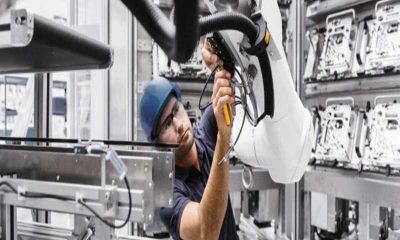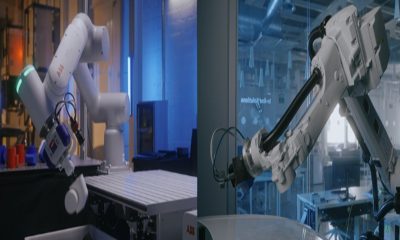On rough seas, ship equipment faces even more severe challenges than passengers. The combined stresses of constant wave motion and diesel engine vibration pose multiple threats to marine systems. This dynamic environment not only impacts equipment stability but can also cause failure of delicate components. To address this industry pain point, Rittal has further developed the Bluee+ energy-saving, vibration-resistant air conditioner for marine applications, offering excellent seaworthiness. It has successfully passed seaworthiness certification from Phoenix Testlab and Det Norske Veritas (DNV), making it capable of easily handling the challenging environments encountered during navigation.
Part 01
Project Background
Ship engine rooms are extremely limited, and new equipment such as scrubbers required by environmental regulations further compresses the space available for technical equipment. These devices face multiple challenges during operation: constant diesel engine vibration, wave-induced ship rolling, and high temperature and humidity environments, all of which place stringent demands on the cooling systems of electronic equipment. “The vibration damping mechanisms used in conventional industrial cooling equipment can be counter-effective in offshore environments,” said Ralf Schneider, head of sales for Rittal Cooling Solutions. “The resonance of heavy components like compressors can rip cooling pipes and damage the mounting base.”
Part.02
Project Pain Points
To provide cooling solutions for the growing marine equipment market, Rittal decided to further develop its Bluee+ energy-saving, vibration-resistant air conditioner for dynamic applications, and to test and certify it for marine use.
Schneider explained the process. “Several years ago, our AX and VX25 cabinets and Ri4Power power distribution system had already received marine certification, but our cooling units had not. One of our customers wanted their entire system, including our cooling units, certified.”
However, obtaining the relevant certifications for cooling units was not an easy task.
There are many major classification societies, and shipowners and outfitters have different preferences depending on the industry involved.
Each supplier also developed different certificates depending on whether the equipment is used on the bridge, engine room, or deck.
Part.03
Solution
Ultimately, Rittal chose certification from Det Norske Veritas (DNV). DNV certificates are widely used in commercial shipping and are globally recognized in critical sectors such as oil and gas. These certificates cover vibration, climate fluctuations and tilting, as well as electromagnetic compatibility (EMC) emissions testing.
To meet the certification requirements for marine equipment, Rittal specifically designed the Blue e+ energy-saving and vibration-resistant air conditioner: strengthening the compressor mounting structure, optimizing the piping layout, and conducting multi-dimensional testing and verification. The certification process consists of three core phases:
01
Pre-conformity testing
Simulating typical marine operating conditions in Rittal’s own laboratory
02
Third-party verification
Commissioned Phoenix Testlab to conduct DNV standard testing
Extreme challenges
Complete testing encompasses vibration, temperature fluctuations, tilt, and electromagnetic compatibility. Lars Diedrichs, Head of Environmental Testing at Phoenix Testlab, explained the testing process in detail: “Vibration testing utilizes a combination of sine sweeps and broadband random vibration, with continuous testing conducted for 2.5 hours in each of three spatial axes. This is followed by environmental testing, including temperature and humidity cycling, to complete the full electromagnetic compatibility verification.” It’s worth noting that EMC standards for the maritime sector far exceed industrial requirements due to the unique electromagnetic environment constraints imposed by ship systems.
Test data showed that the modified cooling unit maintained structural integrity during 7.5 hours of continuous vibration, survived temperature cycles from -25°C to 55°C, and met stringent electromagnetic emission limits. Schneider emphasized, “Although the initial investment is higher than that of standard models, this system offers significant cost advantages over alternative solutions requiring complex piping modifications throughout its lifecycle.”
Rittal’s development of the Blue e+ vibration-resistant air conditioner series represents a significant step forward in advancing industrial cooling technology for dynamic environments. Going forward, Rittal will continue to upgrade its technology and innovate its products to ensure the safety of ships operating safely on the high seas!










